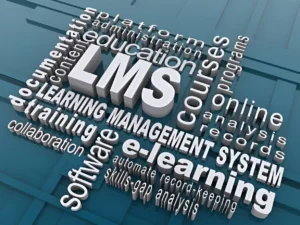By its most basic definition, outsourcing is rather straightforward: It is a contractual agreement between an employer and an external third-party provider whereby the employer transfers the management of, and responsibility for certain functions to the external provider.
The need for specialized expertise and timely delivery is one of the driving forces behind outsourcing, and a second driving force, is the need for cost management. Overall, the fundamental thinking behind outsourcing is the need to “let those who can do this better, faster and cheaper than you do it.”
Going by this explanation, since outsourcing is simply the contracted use and leverage of third-party resources, assets and skills, why does it so often go wrong?
While the answer is definitely relative to each organization, a baseline answer would be that somewhere along the line, the outsourcing program was mismanaged.
More About Outsourcing…
The fact is that much like mergers & acquisitions, outsourcing is a business tool; and like an M & A, it is neither intrinsically good nor bad. But the way it is applied has a fundamental impact on whether it succeeds or fails in delivering the intended outcome.
Without meaning to oversimplify the concept, it is safe to say that just as a scalpel is in the hands of a surgeon, so is outsourcing in the hands of business leaders, it’s a tool, and a powerful one for that matter.
When wielded correctly, outsourcing can transform performance, enhance shareholder value, sharpen competitive edge, and vastly boost the well-being and career prospects of employees and everyone involved. But when wielded poorly, the results could be disastrous.
Since the success of an outsourcing engagement depends largely on the players involved, how can HR & business leaders exploit this tool to their fullest advantage?
The answer lies in three parts:
- First, by understanding what outsourcing is and the processes involved in its execution. This article is designed to facilitate this understanding.
- Secondly, by knowing how to manage the outsourcing relationship in a way that safeguards the business’s own interests, while at the same time getting the best from the outsourcing partner in terms of expertise. Our article on Successfully Managing the Outsourcing Process: 5 Critical Areas of Focus shows you how to achieve this.
- Thirdly, and perhaps most crucially, by understanding the limits of what outsourcing can achieve. To gain insight into this, access our article on How to Outsource: Your Handbook for Outsourcing Success.
The 7 Stages of Outsourcing Process
Since outsourcing is work done for a company by people other than the company’s fulltime employees, every outsourcing program, regardless of the organization’s size, will move through these seven stages of outsourcing process:
- Assessment of Business Needs and Sourcing Strategy
- Defining the Scope of Work
- Selection of Vendor(s)
- Negotiating and Procuring the Contract
- Project Initiation and Transitioning
- Managing the Service Delivery
- Exiting/Transferring the Contract
We’ll now take a quick look at what each of these stages entails.
Stage One: Assessing Business Needs and Deciding Sourcing Strategy

This is the most crucial stage in the process largely because an inaccurate assessment of the business’ core needs will lead to inaccurate solutions. To accurately diagnose the organization’s needs, leaders must take a holistic view of the organization and of outsourcing’s potential role in it.
Failing to do this can have unforeseen consequences down the line, with the worst possible scenario being choosing the wrong partner or contractual structure to implement the needed change.
After accurate diagnosis, management must take the time to strategize on how it intends to meet the need in a cost efficient and highly effective manner. The decision will fall into either of two categories: to in-source or outsource it.
In trying to decide between insourcing and outsourcing, It’s usually helpful to ask these questions:
- What evidence do you have to ‘prove’ insourcing would offer better value in terms of quality of solution delivery and cost efficiency?
- Are there developed resources within the organization to provide the solution at a high-level?
If after careful consideration, the decision is to outsource the solution, the next step is to conduct a benefit-risk analysis. This simply means to outline the benefits and risks of outsourcing and assess whether the benefits outweigh the risks. Click here for an example of what a typical benefit/risk analysis looks like.
After the benefit-risk analysis, if the decision still stands to outsource the work, then stage two kicks in immediately.
Stage Two: Defining the Scope of the Outsourcing Transaction
For some organizations, it is easy to define the general functions within the business process that will be outsourced. To give an example, while some of our clients prefer to outsource only their HR administration functions, others request that we manage their entire workforce, from hiring, training, performance management, to exit.
For more insight, read 5 Reasons Staff Outsourcing Could Prove a Competitive Advantage for Your Business
For in-depth information on how to comprehensively define the scope of your outsourcing transaction, read Five Steps to Outsourcing for Profitability.
Stage Three: Selection of a Vendor
Once the scope of work has been properly defined, the next step is identifying the potential vendor or vendors that have the resources, capabilities, and requisite experience to provide the desired services. Vendor selection can be a very complicated and emotional undertaking.
The main challenge is to ensure a vendor is chosen that delivers quality services at a reasonable price point, one that reduces risks, and one that you can trust.
Choosing the right vendor is much like choosing a good partner; the chances are that if you make the right decision from the onset you will have a potentially lasting relationship while choosing the wrong vendor could damage and thwart a well-intentioned outsourcing project.
Therefore, after a list of potential vendors have been drawn, conducting due diligence on the targeted vendors is key to selecting the best fit for your organization.
Below is a list of what to look out for when selecting your vendor:
- Vendor reputation. What is the vendor’s reputation in the industry? How long has the vendor been in business? Are there any conflicts or problems? Will the vendor’s reputation or culture fit in with the reputation or culture of your organization?
- Financial security. Is the vendor financially secure? What is the vendor’s market share? Ask for a copy of the most recent financial statements and annual report.
- Resource distribution. Where are the vendor’s main service centers? Where are the vendor’s employees located? Does the vendor have resources in the locations that you require?
- Experience—customer environment. Does the vendor have experience with your current/future environment? Does the vendor have the capabilities to provide other services (e.g., IT)? Ask for examples and references. What is the vendor’s experience with implementing new methodologies/technology?
- Experience—industry. Does the vendor have experience dealing with your industry? Ask for examples and references.
- Employee transition. What is the vendor’s experience transitioning employees? How many transitions has the vendor done? Has the vendor ever been sued in connection with a transition?
- Customer base/references. Ask for references and contact names.
- Subcontractors/partners. Does the vendor typically partner with another entity to provide certain services? Who? What is the relationship with the partner?
If this background check yields positive results, your organization will need to send the following documents to the shortlisted vendor(s):
- Request for Proposal (RFP) – it is helpful in determining the bidding process and the terms of the contract.
- Request for Quotes (RFQ) – it enables your company to gain insight into the cost of services.
Stage Four: Negotiation and Contract Procurement
Once proposals are received from the vendors, the outsourcing team within your organization will need to take some time to review each one and evaluate which vendor or vendors are best suited to provide the desired services.
To facilitate the evaluation process, it is helpful to prepare a list of key criteria on which to judge the vendors and their proposals. Once your organization has selected the preferred vendor or vendors, final negotiations may then begin, and the contract drawn.
Although it may seem complex, drafting and negotiating a Business Process Outsourcing contract can be distilled into six basic issues that must be clearly described:
- The scope and nature of the engagement
- Roles and responsibilities of the client organization
- Roles and responsibilities of the vendor organization
- The cost of the engagement
- Metrics for evaluating the performance of the relationship
- Recourses in case things do not go as expected.
Best practice also demands that the contract be divided into the following parts:
- Master Services Agreement (MSA) – Also called the principal or framework document, it defines the overall legal arrangement of the relationship between the vendor and client organizations. It covers areas such as intellectual property, confidentiality, terms of payment, responsibilities, warranties, and work standards.
- Operating Principles— This establishes the accepted norms of behavior and also define boundaries about what is acceptable and what is not permitted in the outsourcing relationship.
- Statement of Work— This defines the scope of the project by specifying the types of work to be performed, the inputs required, the deliverables to be created and the roles of each party in the effort.
- Service Level Agreement (SLA) – This is a critical component of any outsourcing contract. It lists and clarifies expectations pertaining to service type and quality.
- Metrics Definition— This contains the agreed measures for evaluating performance on the part of the vendor and client organization.
Stage Five: Project Initiation and Transitioning
After the contract is signed, the two companies will begin transitioning resources and responsibilities from the business to the service provider.
This represents the official launch of the project, and the focus of this stage is to transition work, decision rights and knowledge to the vendor organization, so that it can conduct the work effectively and, for the most part, independently from your organization.
If there’s one thing we have learnt after 17 years of providing outsourcing services to some of the most interesting businesses in West Africa, it is that this stage is one of the most critical parts of the entire outsourcing process because it sets the tone for how the entire contract will play out.
Even in the best outsourcing deals, things are bound to get a bit rough during the initial phase. But experience has shown us that a little healthy friction at the start of the relationship is a good thing, as it means that both parties care enough about the business relationship to do their part in making it work.
Think of it this way: when two individuals sign a contract to rent an apartment, this does not mean that the first few days will be frictionless.
At this stage we put in considerable effort to ensure that our clients understand the uniqueness of this phase and not get too excited, instead we help them focus their energies on getting the working relationship in order. We also encourage them to be accommodating and flexible rather than rigid.
The salient activities at this stage include continuous evaluation of the relationship, problem resolution, communications management, knowledge management and process management.
The following questions can be used as a checklist to facilitate this stage of the process:
- Are all key stakeholders aware of the terms of the negotiated contract?
- Is there a project team in place to oversee the initiation and transition phase?
- Is there a process in place to handle issues of standardization and integration?
- Are there processes in place to ensure adequate knowledge transfer and training of personnel?
- Is there a work or task management system in place to oversee the major undertaking during the initiation and transition stages?
- Are there communication protocols in place to ensure the smooth flow of information and knowledge between vendor and client teams?
- Are there adequate intellectual property protection and security measures in place to oversee the movement and use of assets from client to the vendor?
- Is there a contingency plan to act as a backup protocol if things go off track?
- Are all of the above issues documented in a transition plan?
- Can the transition plan be used independent of the person or team that created it? Is it prepared adequately enough for all involved members to put it into practice?
Stage Six: Managing the Service Delivery
This stage is typically the longest because it involves maintaining a working relationship throughout the contract. Relationship management includes the continuous monitoring of the outsourcing engagement to ensure that expected levels of operation are being met, and also conducting routine audits on the processes.
Stage Seven: End of the Contract / Transfer
Although it has been our experience that once mutual trust is established, outsourcing relationships last for years at a time; Nevertheless, the purpose of an Exit Management Plan (EMP) is to agree on a set of procedures which is fair to both sides, and the best time to do this is at the drafting of the contract, the time when the relationship is healthy.
Conclusion
In the final analysis, only two factors will contribute to the success of your outsourcing event: The first is the quality of vendor you choose. And the second is the commitment of your organization to do the work that it takes to get the results that you desire.
If we are willing to go this far to bring you the knowledge you need to succeed, imagine how far we will go to ensure that your business wins when we partner with you.
With 17+ years of experience, over 120 consultants and 8,000+ outsourced staff, we have helped over 250+ clients achieve their desired business results, increase revenue and mitigate risks of doing business on the African continent.
With Workforce Group as your HR business process outsourcing partner, we handle both core and non-core HR activities and functions while you focus on the essentials.
Reduce your overhead costs – Outsource your administrative work to us.
Our in-depth industry expertise, experience and capabilities cut across recruitment, talent development, welfare management, performance management, and payroll services.




